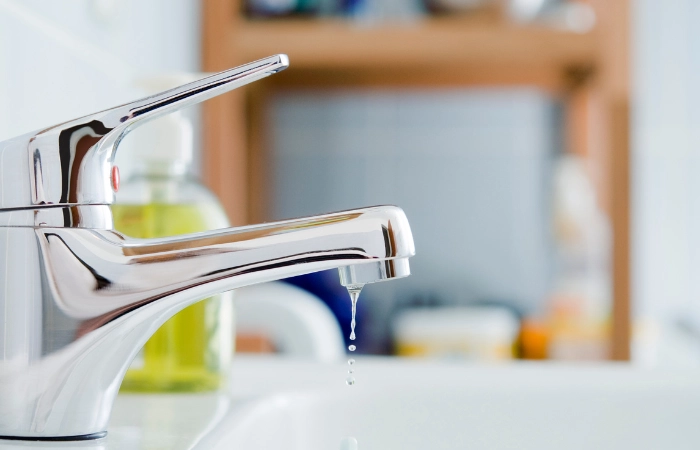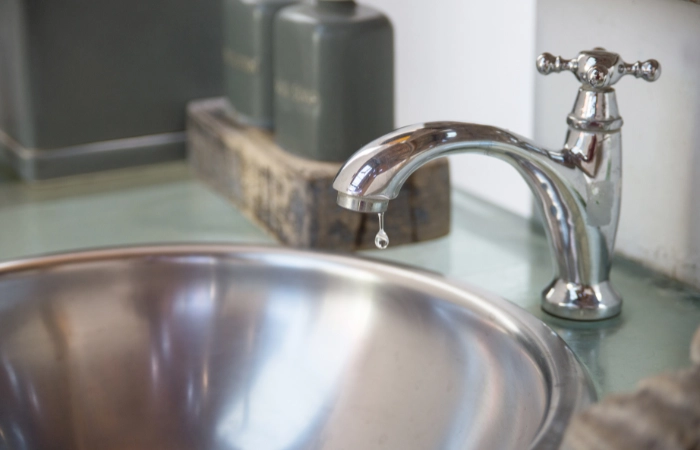
Dealing with a dripping faucet can be frustrating and wasteful. Not only do those persistent drips hike up your water bill, but they can also lead to more significant issues like water damage or mold growth if left unchecked. Fortunately, fixing a leaky faucet is often a straightforward task that homeowners can tackle with a few tools and some patience.
In this guide, we’ll walk you through the common causes of faucet drips and provide step-by-step instructions to help you resolve them. Whether you’re in Minneapolis or anywhere else, these tips will help you maintain a drip-free faucet.
What Are Faucet Drips?
Faucet drips are small, continuous leaks from a faucet that can waste significant amounts of water over time. They often result from worn-out components, such as washers or seals, within the faucet mechanism. Aside from being a nuisance, these drips can increase water bills and lead to water damage or mold growth in the surrounding area if left unaddressed. Timely repair or replacement of the faulty parts can help conserve water and prevent further damage.
Common causes of faucet drip:
- Worn-out washers
- Corroded valve seats
- Loose or damaged O-rings
- Worn-out seals
- Broken plumbing components
- Water pressure issues
- Incorrect installation
- General wear and tear
How to Fix Faucet Drips in Minneapolis
Fixing a dripping faucet is a common household task that can save water and prevent further damage. In Minneapolis, with its cold winters and variable temperatures, ensuring your faucet is in good condition is especially important. Here are eight methods to fix a dripping faucet.
1. Replace the Washer: Over time, washers can wear out, causing faucet drips. To replace, turn off the water supply and disassemble the faucet handle. Remove the old washer from the valve seat and replace it with a new one of the same size. Reassemble the faucet and turn the water supply back on. This simple fix can stop most drips and save water.
2. Check the O-Ring: The O-ring is a small rubber ring that helps seal the faucet. If it’s damaged or worn, it can cause leaks. To check and replace it, turn off the water supply, remove the handle, and inspect the O-ring. Replace it with a new one if it’s damaged. Reassemble the faucet and test for leaks. This is an easy fix that can prevent drips effectively.
3. Inspect the Cartridge: Cartridges control water flow in single-handle faucets. If they’re worn or damaged, they can cause leaks. To inspect and replace the cartridge, turn off the water supply and remove the handle. Take out the cartridge and replace it with a new one. Reassemble the faucet and turn the water back on. This can resolve persistent drips and improve faucet performance.
4. Inspect the Cartridge: Cartridges control water flow in single-handle faucets. If they’re worn or damaged, they can cause leaks. To inspect and replace the cartridge, turn off the water supply and remove the handle. Take out the cartridge and replace it with a new one. Reassemble the faucet and turn the water back on. This can resolve persistent drips and improve faucet performance.
5. Tighten the Parts: Sometimes, loose parts can cause faucet drips. To fix this, turn off the water supply and check all parts of the faucet, including the handle and spout, for looseness. Tighten any loose parts and reassemble the faucet. This simple step can often stop minor drips and prevent further issues.
6. Replace the Faucet:If the faucet is old or damaged beyond repair, replacing it might be the best solution. Turn off the water supply, remove the old faucet, and install a new one according to the manufacturer’s instructions. This not only stops faucet drips but can also update the look of your sink and improve functionality.
7. Check the Water Pressure:High water pressure can cause faucets to leak. To check and adjust it, use a pressure gauge to measure the water pressure in your home. If it’s too high, install a pressure regulator on the main water line. This can reduce stress on your plumbing system and prevent leaks, extending the life of your faucets.
8. Call a Professional:If you’ve tried these fixes and the faucet still drips, it might be time to call a professional plumber. They can diagnose and repair complex issues that you might not be able to fix on your own. While this option may cost more, it ensures the problem is properly resolved, preventing future leaks and potential water damage.
FAQs

How can I identify the cause of my dripping faucet?
Identifying the cause of a faucet drips involves inspecting various components. Begin by turning off the water supply and disassembling the faucet. Check the washers, O-rings, valve seats, and cartridges for any signs of wear or damage. If these parts look fine, consider checking the water pressure or looking for signs of corrosion in the faucet body.
Can faucet drips be prevented with regular maintenance?
Yes, regular maintenance can prevent faucet drips. Periodically checking and replacing worn-out parts like washers, O-rings, and seals can keep your faucet in good working condition. Also, ensuring that your water pressure is not too high can reduce the likelihood of leaks.
Are there specific types of faucets that are more prone to drips?
Compression faucets are generally more prone to drips due to their reliance on washers that wear out over time. Ball, cartridge, and ceramic disc faucets are usually more durable but can still develop drips if their internal components become damaged or worn.
How do I know when it’s time to replace my entire faucet?
Consider replacing your entire faucet if it’s old, frequently leaks despite plumbing repairs, or if you notice corrosion and significant wear on multiple components. Additionally, if your faucet is outdated and you want a more modern look or better functionality, replacement is a good option.
Conclusion
Fixing faucet drips is a simple yet effective way to save water and avoid potential damage. By addressing the issue promptly, you can maintain the efficiency of your plumbing system and keep your water bill in check. With the right tools and guidance, anyone can tackle this common household problem.
For professional faucet repair in Minneapolis, trust True Plumbing Solutions. Contact us today to schedule an appointment and ensure your faucets are in top condition. Don’t let a small drip turn into a big problem!
